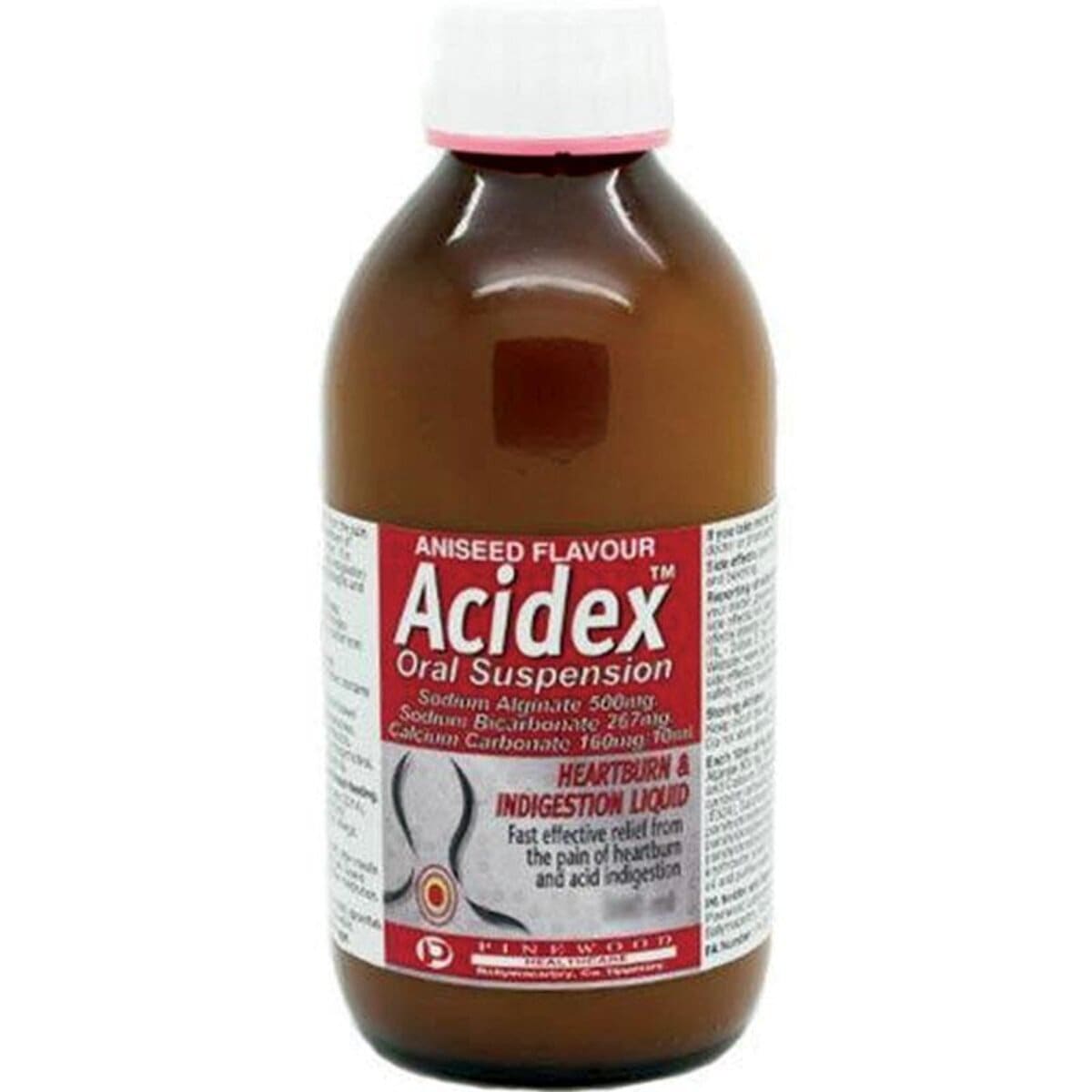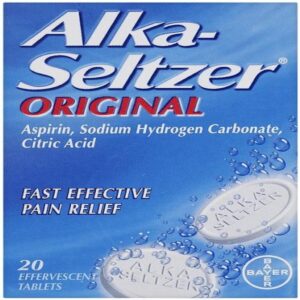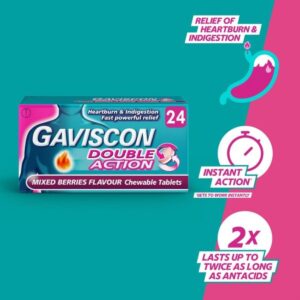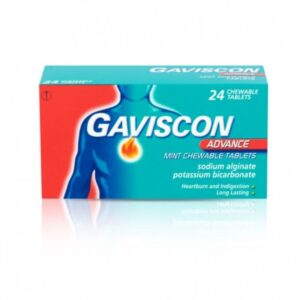Description
Acidex Heartburn and Indigestion Relief Oral Suspension, 500ml
What is Acidex Heartburn and Indigestion Relief Oral Suspension, and what is it for?
Acidex Heartburn and Indigestion Relief Oral Suspension contain three active ingredients that alleviate the painful conditions resulting from the reflux of gastric acid and bile into the oesophagus by suppressing the reflux itself.
It is indicated in heartburn, including heartburn of pregnancy, dyspepsia associated with gastric reflux, hiatus hernia, reflux oesophagitis, regurgitation and all cases of epigastric and retrosternal distress where the underlying cause is gastric reflux.
The medicine is for adults and children over 6 years
Acidex oral suspension is available in 2 flavours, Ainseed flavour and Peppermint flavour
Patient information leaflet
How to use
For oral use
| Adults and children over 12 years: |
Two to four 5 ml spoonfuls. |
| Children 6 – 12 years: |
One to two 5 ml spoonfuls |
Not recommended in children under six years of age.
Doses should be taken after meals and at bedtime.
Caution
This medicinal product is contraindicated in patients with known or suspected hypersensitivity to the active substances or to any of the excipients listed. see packaging.
Each 10 ml dose of this medicine contains about 6 mmoles of sodium and therefore care should be exercised in patients on a sodium restricted diet.
Each 10 ml dose contains 160 mg (1.6 mmol) of calcium carbonate. Care needs to be taken in treating patients with hypercalcaemia, nephrocalcinosis and recurrent calcium containing renal calculi.
This medicine should not be taken within 1 to 2 hours of taking other medicines by mouth
If symptoms do not improve after seven days, the clinical situation should be reviewed.
This medicine should not be used by patients allergic to any of its constituents.
A time-interval of 2 hours should be considered between this medicine intake and the administration of other medicinal products, especially tetracyclines, digoxine, fluoroquinolone, iron salt, ketoconazole, neuroleptics, thyroid hormones, penicillamine, beta-blockers (atenolol, metoprolol, propanolol), glucocorticoid, chloroquine and biphosphonates (diphosphonates) and estramustine. See also 4.4.
Antacids may interact with other drugs as they alter the gastric pH which may affect dissolution, solubility or ionization of the other drug. Antacids reduce the absorption of certain drugs from the following groups: ACE Inhibitors, Analgesics, Antibacterials, Antiepileptics, Antifungals, Antimalarials, Antipsychotics, Bisphosphonates, Penicillamine.
Antacids may increase the pH of the urine and affect the rate of drug elimination. Excretion of basic drugs is decreased whereas acidic drugs are eliminated more rapidly.
Due to effects at the renal level sodium bicarbonate may reduce plasma lithium levels and increase plasma quinidine levels.
Side Effects
Side effects are occasional and rare and may include constipation, flatulence, stomach cramps, and belching.
Reporting suspected adverse reactions after authorisation of the medicinal product is important. It allows continued monitoring of the benefit/risk balance of the medicinal product. Healthcare professionals are asked to report any suspected adverse reactions via the Yellow Card Scheme Website :www.mhra.gov.uk/yellowcard, or search for MHRA Yellow Card in the Google Play or Apple App Store
 +44 (0) 1375 846 316
+44 (0) 1375 846 316



